
By Jared Yost
With the advancement of Theros upon the Magic: the Gathering scene, I can’t help but wonder exactly how this set will affect Standard. From one perspective, the printing of the Scry Lands and the generally higher cost of most cards in the set (Bestow creatures, Legendary Enchantment Artifacts, the Devotion mechanic favoring slow but steady board development) leads me to believe that Standard is about to slow down – significantly. Hellrider was a complete beating, and losing this card will affect the speed of Standard because the more powerful cards from the next two sets in the block are not yet present.
But, on the other hand, when a large block rotation is about to happen (losing the entirety of Innistrad block + M13) and players are left with limited options, you will usually find that the deck type of choice is aggro.
At the start of the new Standard season, aggro decks tend to place well out of the gates. Looking last year at this same time period, we can see that the following decks placed in Top 8’s at starcitygames IQ’s over the month of October 2012:
- R/G Aggro
- G/W Humans
- W/U Humans
- Bant Enchantments
- B/G Zombies
- B/R Zombies
- Junk Tokens
- Naya
- Mono-Red Aggro
- G/W Aggro
- Jund Zombies
- Naya Aggro
- R/B Aggro
As you can see, there were many options for an aggro (even aggro control) build at this period that were able to place very well.
The theory behind why aggro does so well at the beginning of a new Standard environment is that the difficulty level is much higher when building a control deck. This is because there are many different factors a player has to consider when choosing what they want their control deck to specifically accomplish in order to win the game. In contrast, to build an aggro deck all you have to do is jam a bunch of efficient, cheap creatures into a shell and then go to town.
Of course, there are always players that will play control no matter what. There are always players that can play around aggro either because of a greater skill level as a player or properly building a control deck for the metagame based on previous Block season action (see Jace, Architect of Thought rising to $15 currently). But that doesn’t mean that you can’t capitalize financially on the large amount of aggro about to hit the field!
Let’s review in RTR block and M14 what I think are the best aggressive, battle ready creatures at Mythic and Rare that I think will impact the metagame based on revealed Theros spoilers so far:
-
Boros Reckoner – I think that this is the most obvious card that will be included in the aggro builds for months to come. Being a HUGE devotion enabler and an amazing overall creature means that this card is due for a price increase as demand starts to catch up with dwindling Gatecrash supply.
-
Ash Zealot – When I think of an aggro deck, I see mono red aggro being a big contender. With great options like Purphoros, God of the Forge, Burning Earth, Lightning Strike, Boros Reckoner, Stormbreath Dragon, and Mizzium Mortars, there are a lot of tools to build an unforgiving red deck that an untested format will have difficulty dealing with. There is a lot of potential for Ash Zealot in this build. Haste and first strike on a 2/2 body, which also counts a lot toward Devotion costs with a RR mana cost makes this a juicy pickup target. They are very cheap right now; most vendors will sell them for $1.50 or less and you can most likely pick them up in trades as extra throw ins. I predict that some form of mono red will be viable once Theros hits and if Ash Zealot is a part of that deck, it could easily see a $5 or greater price.
-
Imposing Sovereign – This card was mentioned before by other financially savvy magic players when M14 was revealed, but I think now especially is a good time to pick up these guys. It fits great into the white weenie deck that is also probably going to emerge with the introduction of Theros if mono red is not your cup of tea. It’s a Goblin Piker that simultaneously punishes opponents for playing fast decks as well as makes it difficult for slower decks to block. If it sees play and does well you can expect the $2.50 price to increase.
-
Precinct Captain – Well, here is a forgotten little gem! Where red has Ash Zealot, white has Precinct Captain to take up the two drop spot in it’s deck. The Captain was in a fair number of RTR Block decks (18% or so), and you can bet that most cards that are good in RTR Block will see play in Standard towards the beginning of block rotation because they have established themselves as solid cards. Though future strategies may negate the efficiency of a 2/2 first striker that makes 1/1’s, in the beginning everyone will want them to turn on Devotion and to keep the beats coming along with Heliod, God of the Sun. Getting in at $0.50 to $1 for these guys seems like an great pickup to me.
-
Lotleth Troll – Our friend the Troll hasn’t been given much love in Standard since his $10 preorder price. Let this be a lesson – preorders are nothing more than gambling in 99.5% of the cases. Sure, there will always be the story of that guy that bought 40x Sphinx’s Revelation at $4, but I simply compare this to someone winning the lottery. For every winner, there are hundreds if not thousands of losers that also bought in when Time Reversal was $50 and Temporal Mastery was $25. Back to the troll, however, I believe our little friend is due for a price hike. This is because he is an amazing card in a vacuum that needs an aggro environment to shine – and if a G/B aggro deck that runs 4 of these and 4 Scavenging Oozes hits the scene you can bet that spending $1.50 on these boys will certainly pay dividends. It pairs nicely with the spoiled Hero’s Downfall and Thoughtseize, which I can see as the basis of a deck that is either Mono Black splashing green or Mono Black splashing white. Which reminds me…
-
Blood Baron Vizkopa – Though this doesn’t really fit into my article’s theme, I thought I might mention the Baron in this case because this is a card I believe is undervalued right now at $9.50. Its protection from Black (which is a color I believe will be played a ton thanks to Thoughtseize coming back into Standard) will be key, and in addition to all of its other abilities this will make the card an important strategy in control decks or as the top end of the curve or for aggro decks. At the least this will be a sideboard powerhouse. Since it is a mythic rare from an unpopular set, it will be hard to find after a while. Get in at $10 before the price increase starts to happen.
-
Scavenging Ooze (also Mutavault, technically) – I believe that the window has pretty much passed on this opportunity, but still try to get in at $14-$15 if you can. I’ve noticed something very weird with M14 prices this time around (based on M13 and previous core sets) – the cards never really fell to the depths I thought they would after being out around a month. Even though Scavenging Ooze was preordering for $20, it never really fell below $12 if you bought them through vendors over the past month since M14’s release. Either M14 was gobbled up by players so that they could acquire Scavenging Ooze and Mutavault in oodles, or something has really changed with Magic in respect to the speculation dynamic. No longer is it quite as easy to predict the fall, and rise again, of clearly obvious format defining staples with the exception of dual lands. Even Mutavault has not fallen very far from the $15 preorders I was seeing – it still commands an average $13 price tag even though it is played at most as a 2-3 of in current decks and in only 30% of the decks if that. Of course, as more Theros spoilers are revealed it could completely negate the impact of the ooze and vault on Standard, but in my opinion strong cards are strong (in this case, even Legacy strong) and people will want to try and play them in decks even if they don’t fit quite right. As Standard continues into next year, and even the block beyond Theros, at any point Ooze and/or Mutavault could become very good. I would try and get my playset of both of these now because I really don’t see them going down in price in the foreseeable future. At the worst, Standard players now can hold onto these cards indefinitely because they will be playable in Modern and Legacy for years to come.

Tidebinder Mage
-
Tidebinder Mage – This card definitely has the potential to be good because it provides a 2/2 for UU that easily turns on Devotion and can help to hold back annoying red and green creatures. If a blue based Devotion deck comes online taking advantage of Thasa, and all those good blue Scrying creatures, I think that Tidebinder Mage could play a role in early Theros standard. For $1.50 I don’t think you can go wrong. Even if the spec doesn’t turn profitable, you can always send them to a buylist at a later point because I believe that during the next two years this Mage will at least make it into the sideboard of a deck piloted by a popular pro tour player that places well in a random Pro Tour, GP, or PTQ.
-
Voice of Resurgence – Everyone pretty much missed the boat on this guy, but lucky for you Voice is slowly dipping back down into the $30s range of “somewhat affordable again”. You can get it for the low $30s but I think that Voice really has nowhere to go but up. G/W aggro Populate is certainly a possible deck, combining Trostani, Advent of the Wurm, Loxodon Smiter, maybe even Scion of Vitu-Ghazi (another great spec at $0.25 a piece) and this guy for some serious beats. Remember Voice is from DGM like Blood Baron, an unpopular set that was hardly even opened. There is a lot of potential for other DGM mythics or rares to spike unexpectedly, but I wouldn’t be surprised for Voice to soar to the $40s or even $50s again if G/W aggro becomes a staying Standard archetype. For the most part, any deck this thing is played will include four of them. Though I wouldn’t actively try to pick Voice up because of the high barrier to entry, if you can trade for them at $30 I would call it a satisfactory pickup. Worst case, you can unload them come January for the same $30.
In conclusion, there is a lot of financial potential in the low end of Standard aggro decks. Most of them have very low buy-ins as rares, so the risk is mitigated by the fact that even if only one or two of these cards is a great card you can still make money because the cost of entry is so low on these picks. My prediction is that the Gods will make people excited about playing mono colored decks in Standard, so being able to get in early on cards like Ash Zealot for the Purphoros Devotion deck or Precinct Captain for the Heliod Devotion deck will be a good strategy.
That’s all for now folks! In my next article, I will delve more deeply into Theros cards specifically because at that point more than half the set will be revealed.


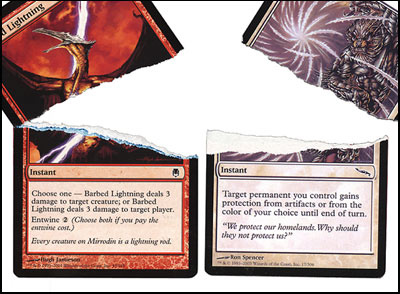
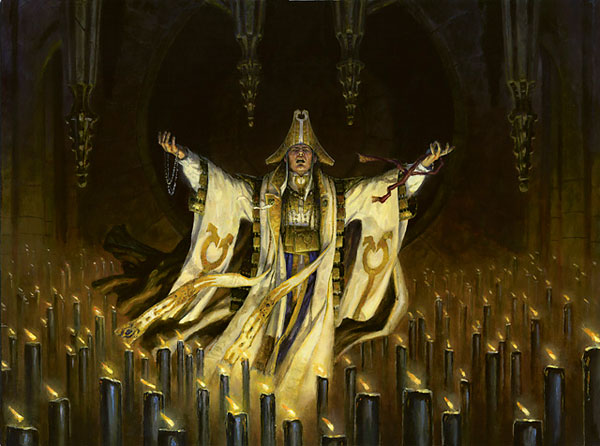

 Price in a year: $3
Price in a year: $3 Price in a year: $20
Price in a year: $20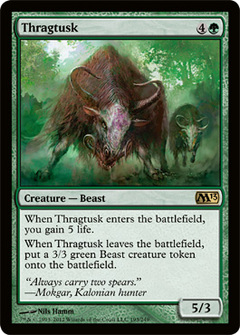 Price in a year: $3
Price in a year: $3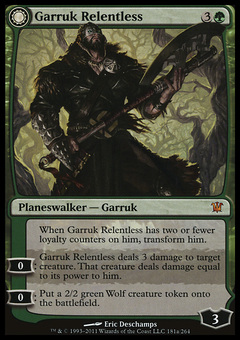 Garruk Relentless
Garruk Relentless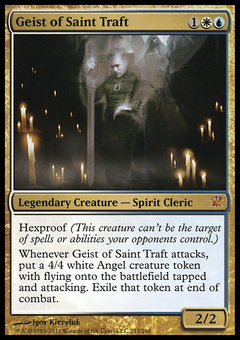 Price in a year:
Price in a year: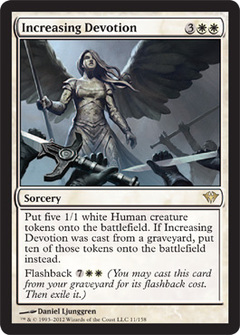 Increasing Devotion
Increasing Devotion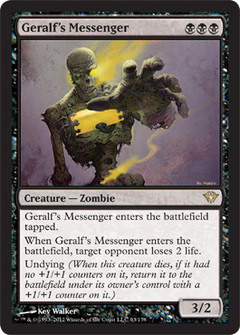 Price in a year: $8
Price in a year: $8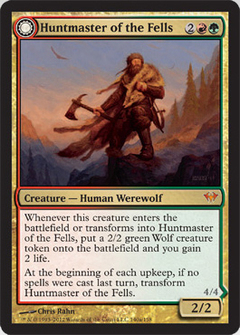 Huntmaster of the Fells
Huntmaster of the Fells Price in a year: $4
Price in a year: $4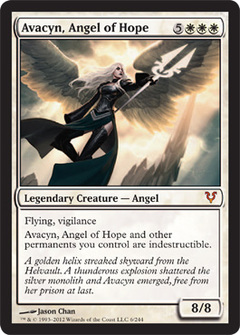 Avacyn, Angel of Hope
Avacyn, Angel of Hope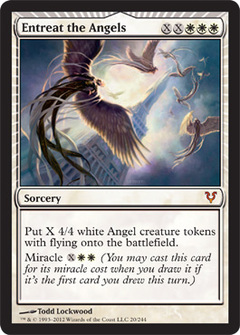 Entreat the Angels
Entreat the Angels Price in a year: $20
Price in a year: $20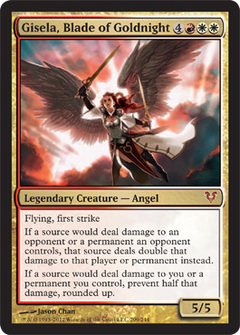 Price in a year: $5
Price in a year: $5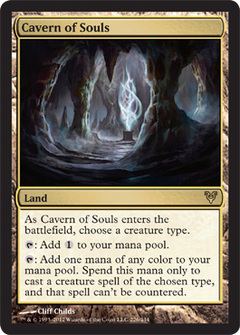 Cavern of Souls
Cavern of Souls